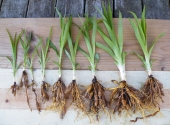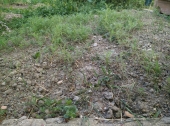hey!
This sounds so great! i actually am a bit in the same situation only my piece of land is way smaller, only 1 acre. But since regenerative agriculture lies in my interests as well i am actually a bit jealous of your situation :D.
What i have found to be very interesting was digging in a bit deeper on the soil food web, an understanding on how your soil actually works made it (at least for me) easier to make the best decisions on how i would treat my litte piece of land. Tilling is actually a massacre beneath the ground surface, so i really wouldn't recommend that, as microbes and funghi support nutrient and water retention, soil structure, keeping pathogens at bay, enlarging root systems and many more. This would be destroyed just to make a sowing bed. I'd try to get the soil covered as soon as possible. the easiest way to do this is by doing nothing at all. Nature will start succession and the best thriving native plants will cover the ground asap. I don't know what your intentions were about your land yields the first years, but what i have done the first year is adding compost the places where i wanted to start growing some vegetableS and with the rest i barely interfered .
It is also very nice to get to know your land and after that, start designing, no matter what scale, you will always get a better idea of the status of your land if you let it be for a while.
A downside is a bunch of frowning neighbours though :D
However it can never harm to give your soil a push start, with adding compost or aerated compost tea, inocculating the soil with the bacteria and funghi that make the base of any healthy soil.
I can suggest the book regenerative agriculture by Mark Sheppard, it is a really comprehensible book about larger scale ecological farming methods, these ideas will surely apply to your land. Teaming with microbes by Wayne Lewis is also a comprehensible, yet pretty scientific book about the life that makes up your soil and how to treat it right.
Hope this helps.






